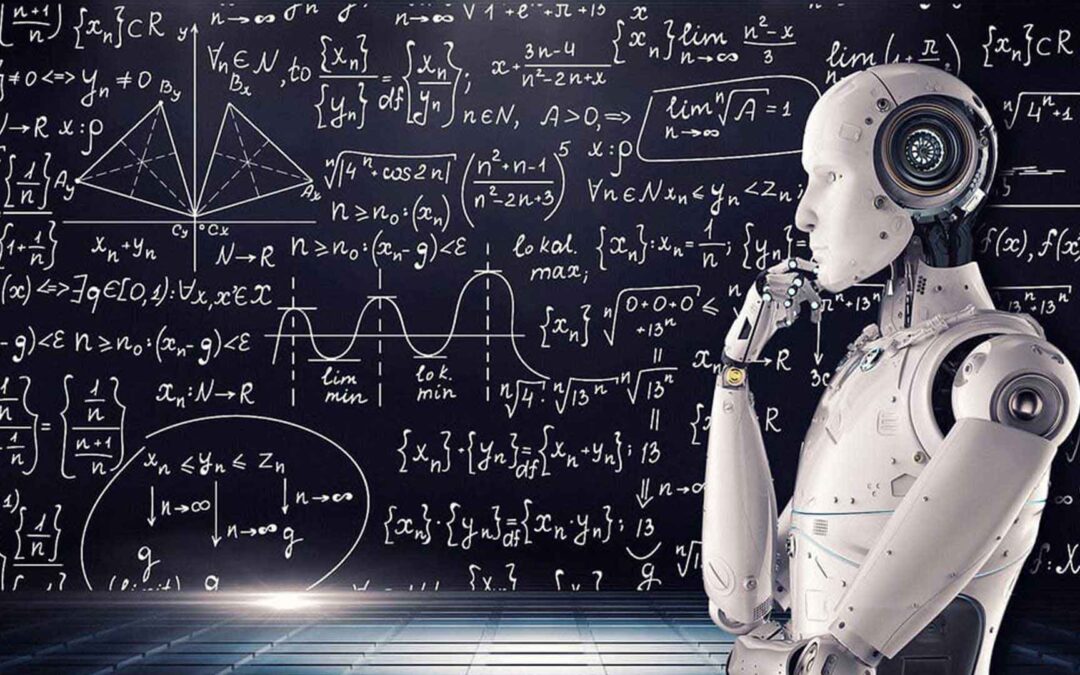
The Next Big Thing in K-12 STEM Education-Artificial Intelligence and Machine Learning
The Next Big Thing in K-12 STEM Education-Artificial Intelligence and Machine Learning
In a study carried out by the U.S Department of Commerce, it was discovered that STEM occupations have grown at a faster pace than regular occupations over the years. Now more than ever, skilled and knowledgeable individuals are needed to fill the ever-growing roles in the STEM sphere.
STEM (Science, Technology, Engineering and Mathematics) is more than a bunch of complicated concepts pooled together. It is actually a very big part of our daily lives and the world. Each component of STEM plays a role in sectors such as designing roads and bridges, changing the weather, exploring other occupations and much more. It is this increased globalization and digitalization that has made STEM a vital part of education. Empowering future generations with the knowledge and skills to take on these accelerated growths and innovation is important. STEM education benefits everyone across genders, ethnic groups, locations, fields, and more. The K-12 range has been chosen to receive this education because we can teach STEM at any age. Starting while the kids are much younger helps to normalize the concept and help them transition easily to their learning.
AI (Artificial Intelligence) has its own role to play in this STEM education for K-12. AI and Machine Learning are poised to uplift STEM education in schools. We will explore how below.
AI and Machine Learning (now and in the future of education)
-
AI and Machine Learning – Students
Several techniques have been employed to use AI to give students personalized learning experience and a simple way to adopt STEM skills. From being able to assess the students’ weakness and strengths through diagnostic testing, AI is able or rather employed to create personalized curricula based on the students’ individual needs. In a regular classroom where there are about 30 students, a teacher might find it almost impossible to reach every student at the customized level of learning that is so vital to them. AI is used to foster sophisticated learning to the extent that student’s expression can be read to identify if the student is struggling to gain understanding and further explanatory lessons will be provided in response to that.
AI applications are equally targeted at providing support and tutoring outside the classroom and connecting kids that may be unable to attend regular classes.
Several software use AI to create an adaptive STEM curriculum on all STEM subjects. These curricula are personalized to the student’s understanding and learning challenges. They are used across the K-12 education range. Future studies and applications all focus on a STEM made-easy approach with AI and Machine learning as the drivers.
Further AI applications in view are emotional support and well-being. Students emotions affect how students learn and studies and work are in motion to create an AI system that can provide oral support to students during learning. The cognitive states in question are Distracted, Inactive, and Concentrating. This research and endeavor are based on proof that emotional support positively impacts students’ ability to learn and teacher may be unable to fill the gap as needed.
-
AI and Machine Learning – Teacher collaboration
As AI and Machine learning continue to impact education and provide solutions that evolve, teacher and AI collaboration becomes more vital. AI and Machine learning can drive efficiency, feedback, personalization, and organization to help teachers better meet the needs of their students. The idea of collaboration is that teacher and AI work together to provide the best outcome for fostering learning (STEM education included) for the students. One such touchpoint is grading. Educators spend a lot of time grading tests and homework. Current and future technologies focus on using AI for these activities while at the same time providing recommendations to the educator to help close the learning gap with students. This frees up an educator’s time, leaving him/her with more freedom to invest in understanding students’ needs. Following small successes like this, research is underway to involve AI in the enrollment and admission processes.
STEM education may not be as easy for teachers without a solid background on the concept to teach. Teachers are expected to upgrade their skills and knowledge in this area and be able to impact students with it. AI and Machine learning can assist and teach the teacher as much as they do the same for students.
- AI and Machine Learning – Connecting everyone in STEM education
With many of the applications of AI and Machine learning for STEM education still in the works, there are other expectations. AI and Machine Learning are expected to assist and enable proper STEM education for both students and teachers alike. At the same time, suggestions have been made towards worldwide or inter-school connections. STEM education is world impacting and with AI almost anything is possible. AI can be connected to different classrooms across the world to foster greater communication, cooperation, and collaboration between schools, nations, and educators.
- AI and Machine Learning – Future workforce
STEM is now and the future. So are AI and Machine Learning. The World Economic Forum estimates that by 2022, a high number of organizations and companies would have employed Machine Learning. Hence, the forum encourages governments to focus strongly and rapidly on empowering students with education and skills. The primary focus of these skills and education being STEM (Science, Technology, Engineering, and Mathematics). In addition, non-cognitive soft skills. All of these are critical to meet the impending need.
In a recent study carried out by Microsoft, it was discovered that by 2030, students should have mastered the following to be able to survive in the new world:
- Understanding problem solving and teamwork.
- Utilizing innovative technology primarily AI
These discoveries make it clear that there is still much to do in K-12 STEM education Artificial Intelligence and Machine Learning. Hopefully, with slight improvements in the current pace and realization of other innovative solutions, students will be ready for the future. The most crucial point is to keep up with the introduction of these techniques to K-12 education.









Recent Comments